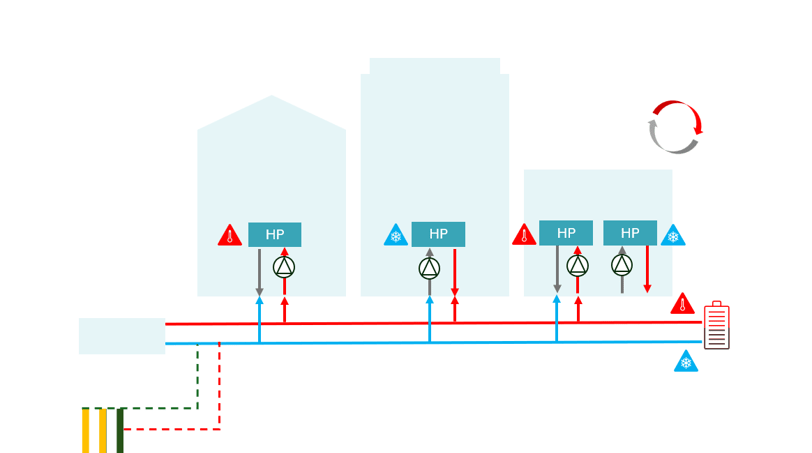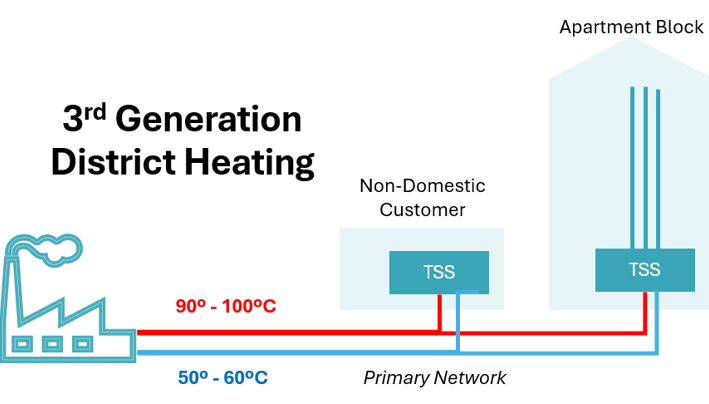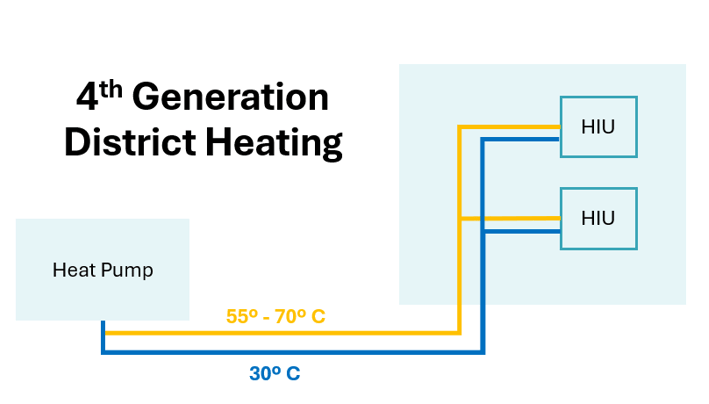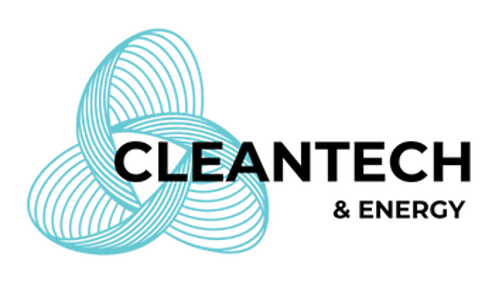Understanding 3rd, 4th, and 5th Generation Heat Networks
District heating is a powerful, behind-the-scenes tool that helps cities decarbonise, keep homes warm, and uses energy more efficiently. But not all district heating systems are created equal, they’ve evolved over time, and newer systems are cleaner, smarter, and more flexible. In this article, we break down the three modern “generations” of district heating: 3rd, 4th, and 5th generation, using simple language (and some helpful visuals) to show how they work, and why it matters for the future of heating.
7/16/20253 min read


What is District Heating?
Before we dive in, let’s cover the basics.
District heating is a system where heat is generated in a central location and then delivered to multiple buildings through a network of insulated pipes. Instead of every home or office having its own boiler, they’re all connected to a shared system.
It’s like a central heating system for a whole community, town, or city.
3rd Generation District Heating: The Reliable Workhorse
Temperature: High - typically around 70 - 100°C
Heat Source: Often natural gas boilers, biomass, or waste heat from power plants
Pipes: Pre-insulated steel pipes where hot water is transported to buildings
What it does:
This system has been widely used across Europe since the 1970s. It’s a major step up from earlier versions that were less efficient and harder to maintain. 3rd gen systems are dependable, can deliver heat over long distances, and have been key to rolling out low-carbon heating in cities.
Challenges:
High water temperatures mean more heat loss in the pipes and fewer options for renewable sources like heat pumps, which work best with lower temperatures.
4th Generation District Heating: The Low-Carbon Upgrade
Temperature: Lower - 55- 70°C (or even lower)
Heat Source: Renewable sources like large heat pumps, solar thermal, geothermal, and waste heat
Pipes: Same principles but plastic (PEX) pipes can be used
What’s new:
4th gen systems are designed for net zero. Lower temperatures reduce heat loss, make the system more efficient, and allow more use of renewable or waste heat sources. They’re also designed to work well with smart controls and modern energy grids.
Why it matters:
4th generation networks are a bridge between today’s systems and tomorrow’s fully flexible, local-energy-sharing future. They help cities reduce carbon emissions and rely less on fossil fuels.
5th Generation District Heating & Cooling: The Smart Grid
Temperature: Very low - ambient loop (10–30°C)
Heat Source: Ultra-local sources - wastewater, data centres, supermarket fridges, solar, geothermal
Technology: Shared-loop systems with local heat pumps in each building or each apartment
How it works:
Instead of pumping hot water around, 5th gen systems circulate lukewarm water, close to the temperature of the ground or outside air. Each building or apartment has its own heat pump to extract or reject heat as needed, providing heating in winter and cooling in summer.
It’s highly efficient, decentralised, and smart. It can even let buildings “trade” heat with each other.
The future of heating:
5th generation systems are perfect for modern, highly insulated buildings, where both heating and cooling is required, and they can be combined with solar panels, battery storage, and other local energy sources. They’re not yet widespread, but they show where the industry is heading.
Why This Matters
The way we heat our homes and buildings is changing - and needs to change - if we’re going to reach climate targets. Moving from 3rd to 4th and 5th generation systems means:
Lower carbon emissions
Better use of renewable energy
Less wasted heat
Smarter, more flexible grids
Each generation is a step forward. At Cleantech & Energy, we work with cities, developers, and public bodies to design and deliver systems that are future-ready, efficient, and built around real-world needs.
Want to learn more or see how this applies to your project?




